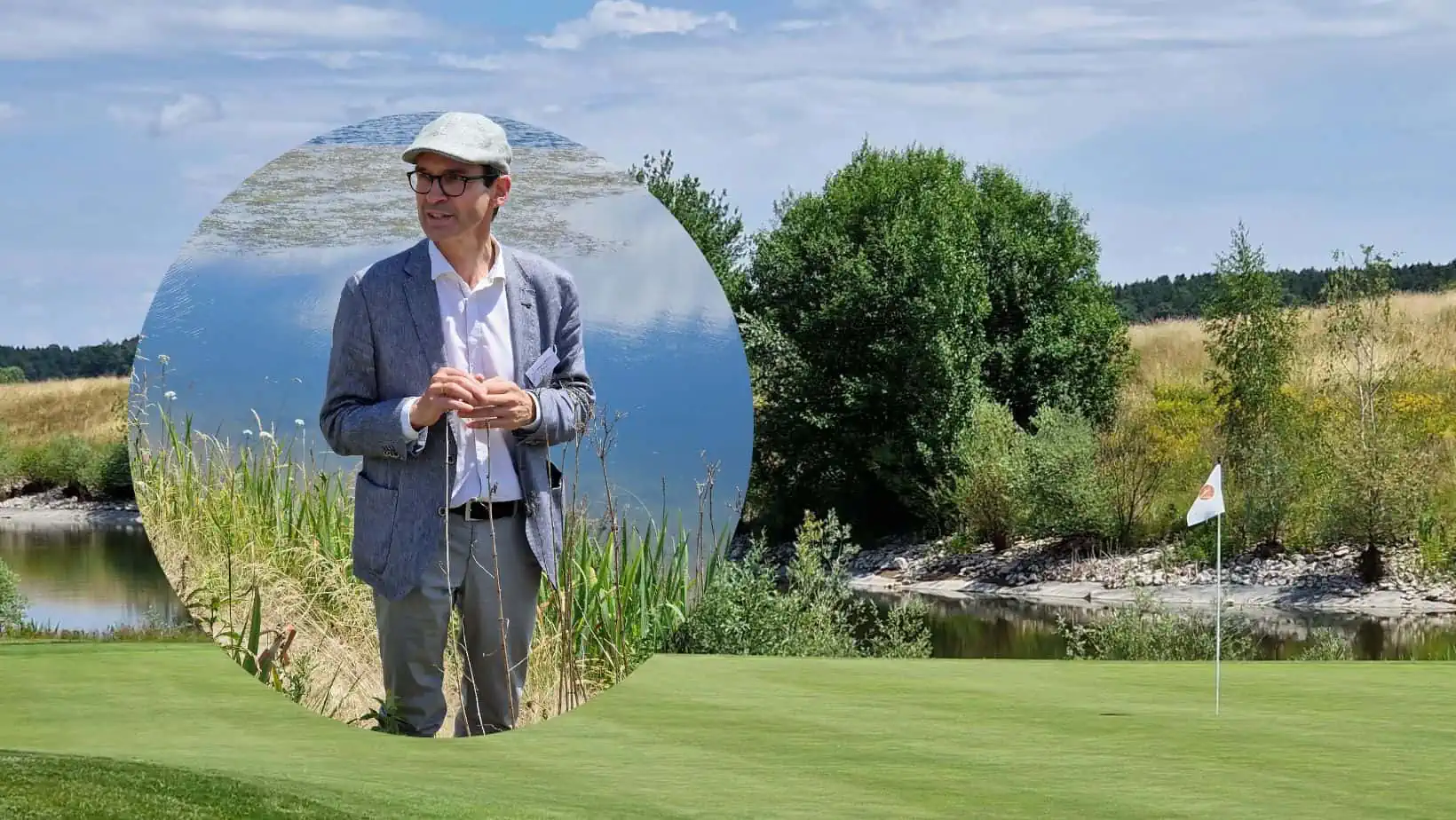GolfBiodivers study officially launched
The German study project GolfBiodivers has officially gained momentum. At the launch event of the Golf & Biodiversity Study at the Valley Golf Course in Bavaria, it once again became clear how important golf courses are for promoting biodiversity.
“We can make this even more awesome”
“They depict a very small-structured landscape as it was historically present in Germany” – this, says Prof. Dr. Johannes Kollmann, holder of the Chair of Renaturation Ecology at the Technical University of Munich, is an important achievement in the context of the current biodiversity crisis. Golf courses, he appealed to the assembled club managers and greenkeepers, could exploit the potential of their extensive areas even better than is already the case. “I think what you do great, you can do even greater.”
Four universities and 64 golf courses
In the course of the GolfBiodivers project, which involves not only the Technical University of Munich but also the universities of Kiel, Münster and Freiburg and is being carried out on a total of 64 golf courses over a period of six years, the ecosystem performance of the existing areas is now being analysed. Along with this, scientific research is being conducted to determine how these vary versus areas adjacent to the golf course. At the same time, two areas are juxtaposed on each of the golf courses, one of which is sustainably enhanced, while the other is left as it is. The upgrading potential on the golf courses is derived from this. The project is financed by the Federal Agency for Nature Conservation.
The importance of assessing the LCA performance of golf facilities for the sport of golf as a whole was emphasized several times by the numerous golf officials and club representatives at the event. “Golf courses are not landscape wasters because they withdraw their areas from intensive use in favor of a high level of biodiversity,” noted Arno Malte Uhlig, president of the Bavarian Golf Association.
“We want to do this ambitiously”
“We know that we and our golf courses are doing a lot in the area of biodiversity. But this event documents that we also want to do this in a really ambitious way and, above all, that we are also interested in a scientific review,” explained Alexander Klose, Board Member for Legal & Services at the German Golf Association. After all, “our realization is that there are big tasks ahead of us that we have to deal with.”
With this, Klose alluded to Marc Biber ‘s presentation on “Challenges of Sustainable Golf Course Operations,” in which the German Golf Association’s Department Head of Environment & Course Maintenance proclaimed the future goal “that every golf course has a green calling card.” This was to document how the club was positioned in the areas of climate neutrality, resource conservation and greenkeeping. “Promote biodiversity as a unique selling point of golf,” Biber urged those in attendance.
“We as greenkeepers do not need to be convinced of the need for ecological enhancement of areas. This has already been an issue with us for years,” noted Manfred Beer as president of the Bavarian Greenkeeper Association. “But I am very impressed with the level at which we are now discussing the issue.” For Beer, the strong presence of Bavarian greenkeepers at the inaugural event was also a positive sign. “Of course, the implementation of green issues always depends on the will in the clubs. If it’s desired internally, you can simply achieve a lot.”
“The topic of biodiversity has accompanied us as golf course operators for a long time, but in the context of public perception we are currently primarily concerned with the water issue,” summed up Bernhard May as president of GC Würzburg. “Yet sustainable water management has been a topic in golf for years, and many golf facilities are pursuing it as systematically as biodiversity.” Dr. Gunther Hardt, head of the Biodiversity Working Group at the German Golf Association, explained how this work can ultimately be communicated in a way that promotes the golf courses image and attracts public attention. “Biodiversity is also a marketing measure,” he noted, pointing to the positive external impact of species-rich meadows, biotopes and wetlands, which Golf Valley boasts in spades. “We’re doing a lot, we just need to get it on the road.”







